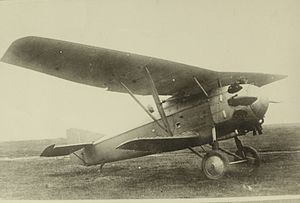Top speed 257 km/h Length 7.27 m First flight 1927 | Wingspan 11 m Retired 1933 | |
 | ||
The Tupolev I-4 was a Soviet sesquiplane single-seat fighter. It was conceived in 1927 by Pavel Sukhoi as his first aircraft design for Tupolev, the first Soviet all-metal fighter.
Contents
Design and development
After the first prototype (under the development name Andrei Nikolayevich Tupolev fighter 5 | ANT-5), the I-4 was redesigned with a new engine cowling to decrease drag, with added rocket launchers on the upper wing and a larger tailfin. The lower wing was predominantly an attachment for the wing struts; it was almost removed in the second series, the I-4Z (where the lower wings were greatly shortened), and totally removed from the I-4bis, thus transforming the aircraft from a sesquiplane into a parasol-wing monoplane.
Operational history
The I-4 was used as a parasite fighter in experiments with the TB-3 bomber. The aircraft was in Soviet service from 1928–1933. A total of 369 were built.
Variants
Operators
Specifications (I-4)
General characteristics
Performance
Armament
